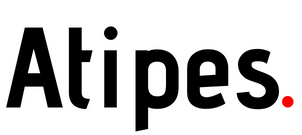Run the Diagnostic
If you suspect that your ad account might be under attack by bots, you need to run a diagnostic as soon as possible. The first step is to ask for a list of leads from your client or sales team.
Once you have the lead list, you need to look for some signs that indicate fraudulent traffic:
Optional form fields are largely empty
Country of origin are some of the first that appear
Names are weird
Email domains are largely unknown
These signs show that the leads are not genuine prospects, but rather fake accounts created by bots or click farms.
Another way to detect bot attacks is to look for spikes in your key performance indicators (KPIs). If you see a sudden improvement in metrics like impressions, clicks, conversions, or cost per acquisition (CPA), you might be excited at first. However, if these spikes last for more than 2-3 weeks without any explanation, you should be concerned.
Spikes in KPIs can mean that bots or click farms are inflating your numbers artificially. This can make your campaign look good on paper but actually hurt your return on investment (ROI).
To confirm if these spikes are caused by bot attacks, you need to compare them with other metrics like bounce rate, time on site, pages per session, or conversion rate by device. If these metrics show low engagement or poor quality traffic from certain devices or countries, then you have a problem.
Finish Them!
Once you can prove that you have a bot attack on your ad account, there are three steps that can help you stop it:
Block the IPs of the suspicious leads: Click Farms are usually located in one place, so one IP address can be linked to 2-3 leads. You can use tools like Google Analytics or Facebook Ads Manager to find out the IP addresses of your leads and block them from seeing your ads.
Install ClickCease to your website and link it to your ad accounts: This platform starts at $55 a month and blocks all VPN traffic, super-fast clickers and other suspicious traffic. For Ivywise, it has blocked 80-90% of all fraudulent traffic. The platform also allows you to apply for a Google Ads refund for the fraudulent traffic that’s not usually recognized by Google Ads alone.
Report the bot attack to Google Ads or Facebook Ads support team: If you have evidence that your ad account has been attacked by bots or click farms you should report it to Google Ads or Facebook Ads support team. They might be able to investigate further and take action against the perpetrators.
By following these steps, you can protect your ad account from bot attacks and save money and time.
Bot attacks are not something that should be ignored or taken lightly. They can ruin your online advertising campaigns and waste your resources. By following the steps in this article, you can identify and prevent bot attacks on your ad account and improve your campaign performance.
©Copyright 2023.All Rights Reserved.
Disclaimer : This advertisement and the information related to it are provided and maintained by the advertiser. Atipes.com is not responsible and can not guarantee the accuracy or completeness of this advertisement. Please note that every advertisement for rent or for sale should at a minimum, display the energy performance rating of the property. See our Flats and Housing Posting Rules for more information.
Avoid scams: Signs of fraud: wire transfer, money orders, cashier checks, payment via gift cards, shipping, escrow, "transaction protection", "guarantee". Be safe by dealing locally.

